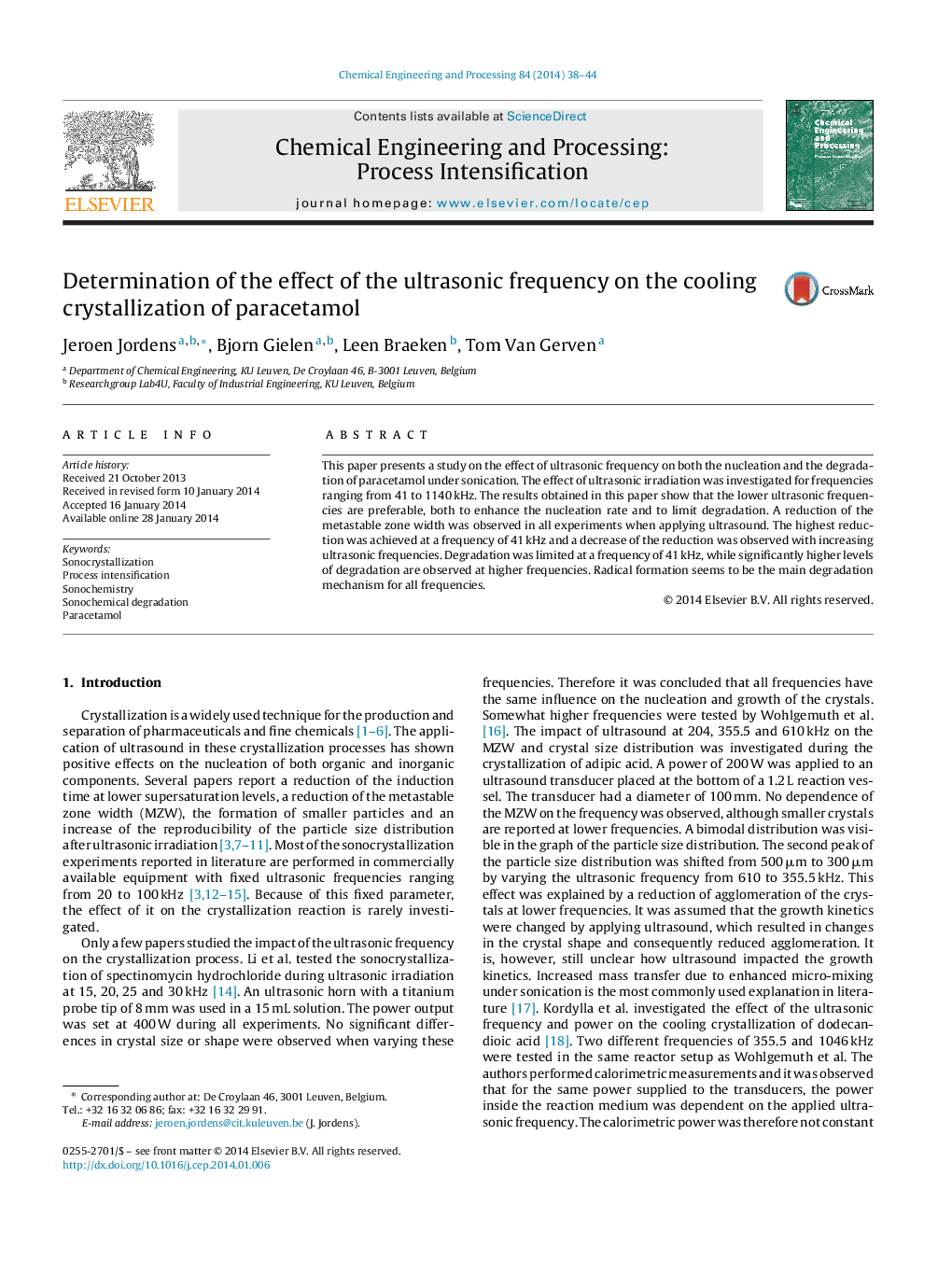| Article ID | Journal | Published Year | Pages | File Type |
|---|---|---|---|---|
| 688176 | Chemical Engineering and Processing: Process Intensification | 2014 | 7 Pages |
•Highest reduction in metastable zone width at the lowest frequency.•Lowest degradation at the lowest frequency.•Radical formation is the main degradation mechanism.
This paper presents a study on the effect of ultrasonic frequency on both the nucleation and the degradation of paracetamol under sonication. The effect of ultrasonic irradiation was investigated for frequencies ranging from 41 to 1140 kHz. The results obtained in this paper show that the lower ultrasonic frequencies are preferable, both to enhance the nucleation rate and to limit degradation. A reduction of the metastable zone width was observed in all experiments when applying ultrasound. The highest reduction was achieved at a frequency of 41 kHz and a decrease of the reduction was observed with increasing ultrasonic frequencies. Degradation was limited at a frequency of 41 kHz, while significantly higher levels of degradation are observed at higher frequencies. Radical formation seems to be the main degradation mechanism for all frequencies.
